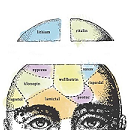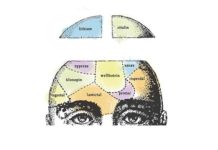Thinking Upstream: Winning Real Mental Health Reform By Joining the Anti-Corruption Movement
At the end of my talk at the American Psychiatric Association Institute on Psychiatric Services , a psychiatrist in the crowded lecture room put his hand up and posed a surprising challenge: Why was I so concerned about reforming psychiatry and ending iatrogenic harm from medications, diagnosis, and forced treatment when there are so many other issues in society to worry about?
What the Research Has Told Us About Peer-Run Respite Houses: The Second Story Story
The Second Story Peer Respite House was intended to implement - and evaluate the effectiveness of - peer respites in promoting wellness, and supporting individuals experiencing psychological distress, by providing a community-based alternative to psychiatric emergency services. Today this dream has been validated and confirmed by an evaluation team from the Human Services Research Institute (HSRI), led by Bevin Croft. While I sat and listened to Bevin present her findings I couldn't hold back my tears. Her report was so positive and affirming that all I could do was cry with joy.
May 16, 2015: 25 Shock Treatment Protests in 9 Countries! What Now?
On May 16, our human rights movement carried out 25 protests against shock treatment in 9 countries. It was very exciting to see both old hands and new leaders pulling together to make this happen. Now we can take advantage of this momentum to organize an ongoing structure that can carry out more actions like this and strengthen our movement. Congratulations to us!
3 Facts All Parents Should Know About ADHD Stimulant Drugs
Medicating children for a host of mental disorders has become very popular in some parts of the USA. More than 8 million kids from 6 months to 17 years of age are on pharmaceutical drugs in this wonderful country. We lead the world in drugging youth for behavioral, cognitive and attention issues. We are once again #1. But I would like to share with parents as well as adults working with children a few not so readily available facts related to medicating kids for behavior issues.
The ADHD Label and Mortality
Most people on hearing that ADHD is a "neurodevelopmental disorder" would assume that a neurological pathology is implied. But all the DSM-5 requires is that the individual be functioning below par (for any reason) in one of several areas. It doesn't take a great deal of imagination to see how individuals who are distractible and impulsive have a higher mortality rate. But people who ride motorcycles routinely also have a higher than average accident-related mortality rate. Should we therefore conclude that riding motorcycles is a "valid" illness?
From Independent to Institutionalized
Dutch peer support education has changed dramatically over time since its inception. Peer support education has evolved over time from empowered and independent peer support education to institutionalized peer support education. In effect the (future) peer support workers in the Netherlands could become clinician-friendly peer support workers who merely represent peer support work in name but not in practice.
Chemicals Have Consequences: Antidepressants, Pregnancy, and the New York Times
Depressed pregnant women need good care. They should not be made to feel guilty for the choices they make concerning their depression or lectured to by those who don’t understand the area or lack compassion for them. In that sense, Andrew Solomon does the public a service by turning his attention and writing talents to the topic of depression and pregnancy this week in the New York Times. However, a crucial part of providing good care to depressed pregnant women is to give them accurate information on the topic. In this sense, Andrew Solomon falls short.
Children are Vulnerable Targets on the Algorithm Superhighway
It is close to midnight and a group of eight high-level CFOs from the major pharmaceutical companies sit anxiously around a conference table. They all have binders with TransCelerate BioPharma written boldly in black across the cover. TransCelerate is a consortium born in 2012, whose mission is to accelerate the development of new drugs and bring them quickly to market. There are two reasons for the high level of anxiety that the CFOs in the above meeting are feeling; first, the research and development of new drugs has been slower than predicted and profits not as massive as hoped for. The second reason is alarming; NIMH may soon start cutting research funding and the pharmaceutical companies have depended upon their liaison with NIMH for funds and for political leverage.
Has a New Twin Study Meta-Analysis Finally “Settled” the Nature-Nurture Debate?
In the May 20th, 2015 edition of the Huffington Post, Macrina Cooper-White reported on a recently published meta-analysis (analysis of combined studies) of 2,748 twin studies performed in 39 different countries published between 1958 and 2012, which looked at more than 17,000 physical, medical, and psychological characteristics (traits). Cooper-White concluded that the results of this study indicate that the nature-nurture debate “may now be over.”
Psychiatrists May be Ready to Learn About Treating With Micronutrients
It was May 19, 2003, in San Francisco; the first-ever (we think) symposium on micronutrient treatment to be on the schedule for the annual meeting of the American Psychiatric Association. There was moderate interest. This year, the two of us (both psychologists) presented many, many studies on the use of micronutrients to treat anxiety, stress, depressive symptoms, ADHD, aggression, mood, and addictions. The amount of data differed dramatically from 12 years ago, but the biggest difference was the response from psychiatrists!
Who’s the “Menace to Society”? Robert Whitaker or Jeffrey Lieberman?
Jeffrey Lieberman, American Psychiatric Association through May 2014, recently called Robert Whitaker a “menace to society” because Whitaker had challenged the long-term effectiveness of psychiatric medication. But is it Whitaker or Lieberman who has been a menace to society? Lieberman, earlier in his career, conducted experiments in which patients diagnosed with schizophrenia were given a psychostimulant drug with Lieberman’s expectation that this drug would be “psychotogenic” (induce symptoms of psychosis), and this deterioration in fact occurred. How could the APA not feel guilt or shame about Lieberman and other psychiatrists conducting experiments that create psychotic symptoms and suffering? The answer to this question takes us to a very dark place.
Neuroleptic Drugs And Mortality
In November of last year, Schizophrenia Bulletin published a research study that, on the face of it, would seem to upset the notion that neuroleptic drugs are toxic and that their use markedly reduces life expectancy. There are, however, some problems with the study that need to be considered.
The Murphy Bill: People are Afraid
Recently, the Murphy Bill in the United States Congress has resurfaced as a tangible threat to the civil liberties of individuals labelled "seriously mentally ill." As many others might relate, my reaction was one of rage, sadness, and utter bafflement. Yet, here we are. Having defeated the bill once, it is back like herpes. After my frustration and anger dissipated a bit, I pondered this and was hit with a "duh" moment. Politics is not about facts; politics is about power, money, and playing on the emotions of society.
Reflections on ‘Montage of Heck’: The Life and Art of Kurt Cobain
The Greeks understood that there was a function for theater and art. Through art, life’s tragedies could be enacted on stage, where the audience could vicariously participate in a drama and live through it in their imagination. In a world with no art, people enact the dramas in reality. Without an imaginary war in art, there would be a real war in life. Certain artists like Kurt Cobain put their art into the world. Music is the art form that communicates feeling directly. Kurt couldn’t connect in feeling in his real life, which is so much the story of a life of extreme pain.
A Declaration of Interdependence for the Era of the Murphy Bill
How we think about health, happiness, and self-fulfillment, how they are linked with flawed systems of government has been assigned to the domain of social scientists. The most influential of those are the psychiatrists who have been given the government-mandated power to diagnose, incarcerate and forcibly drug those who are perceived to have a form of mental illness. I believe that such power is arbitrary, unjust and frequently harmful.
Reflections on a Beautiful Mind
In the past 50 years, the story of John Nash, as told first in the book A Beautiful Mind and then in the film that starred Russell Crowe as the great mathematician, is perhaps the best-known story of a person diagnosed with schizophrenia who “recovered.” Today, with obits appearing in the newspaper following his death on Saturday in a car crash in New Jersey, it is worth remembering how the true story of his recovery was hijacked in the movie and turned into an ad for a second generation of psychiatric medications.
Adventures at the APA
On May 18, I had the pleasure and privilege of chairing a workshop at the American Psychiatric Association's annual meeting in Toronto. The topic: Rethinking the Long-Term Use of Antipsychotics in Schizophrenia: For Everyone, No one or Some?
Announcing Mad in America’s New Resource Section on Psychiatric Drug Withdrawal
I know from firsthand experience how hard it can be to read a simple sentence about withdrawal when on or coming off psychiatric drugs, let alone to feel clear-headed enough to track down information on the internet, sift through it all, decide what’s trustworthy and reliable and what should be ignored, and make a safe and responsible plan. The purpose of our psychiatric drug withdrawal section is to make it easier, clearer, and more accessible for those in our community to get informed about coming off psychiatric drugs.
Questions About Jeffrey Lieberman’s “Notorious Past and Bright Future of Psychiatry”
I just attended my first American Psychiatric Association (APA) meeting even though it has been going for 168 years. I was invited to join a symposium on vitamin-mineral combinations as primary treatment of psychiatric symptoms. There was one talk I decided to attend, not because I was particularly interested in the topic, but because it would give me an opportunity to ask Jeffrey Lieberman a question.
Book Review: Psychiatry in Context: Experience, Meaning & Communities, by Phil Thomas
Psychiatry in Context follows on from Phil Thomas’s previous ground-breaking analysis Postpsychiatry (Bracken & Thomas, 2005), and is set to become just as influential and indispensable to anyone concerned with the politics, practice, and philosophy of mental health. In some respects this is almost ironic, because a book like Psychiatry in Context would ideally be unnecessary.
ECT: Safe and Effective for Agitation and Aggression in Cases of Dementia?
It is often not appreciated by the individuals receiving electrically induced convulsions that any gains they receive from the procedure will almost certainly be short-lived, and that the "treatment" will need to be repeated more or less indefinitely at intervals of about a month. Case studies can be helpful and informative, but they tell us little or nothing on the general questions of safety and efficacy.
Reviving the Spirit of Ken Kesey’s One Flew Over the Cuckoo’s Nest!
Today, Saturday, 16 May 2015, a protest was held in Eugene against human rights violations caused by the use of electroshock, a psychiatric procedure involving the running of electricity through the brain. The protest today was one of about two dozen held in about eight countries.
Psychiatry Reconsidered … Once Again
It would be a shame if Andrew Scull’s Madness in Civilization did no more than draw well deserved applause for his authorship and historical expertise, and a prominent place in the bibliography of madness. My own copy of Madness in Civilization arrived last week, and it is great; comprehensive, brilliantly written, lots of colourful and many disturbing illustrations. Madness’ continuing story, “From the Bible to Freud, from the Madhouse to Modern Medicine” is told as never before, but there seems to be something missing...
The American Indian Youth Suicide Epidemic: Mental Health Professionals as Superheroes
My previous pieces for Mad In America caught friendly eyes at Indian Country Today Media (ICTM), and they’ve recruited me to write a forthcoming multipart series on oppression in mental health in Indian Country. I’m very grateful for this opportunity, especially to you, dear reader, and all the folks at Mad In America. I’ll be linking ICTM readers to my blog site here and will hope it causes them to investigate the MIA website more deeply. Before I back away for a while, however, let me offer a few words about the current epidemic of youth suicide at Pine Ridge Reservation, and a recent story for the New York Times
Listening to the Voiceless Citizens
Just this morning CNN reported that 3 men were arrested over plans to travel from N.Y. to join ISIS and one of them posted online about his plans to assassinate the President. Cyberspace and social media are the platforms from which terrorists speak, express their ideas and exert powerful influences over some individuals in this and other countries. The voices of terrorists are clearly compelling and appealing. Their voices are being responded to in dangerous ways.










